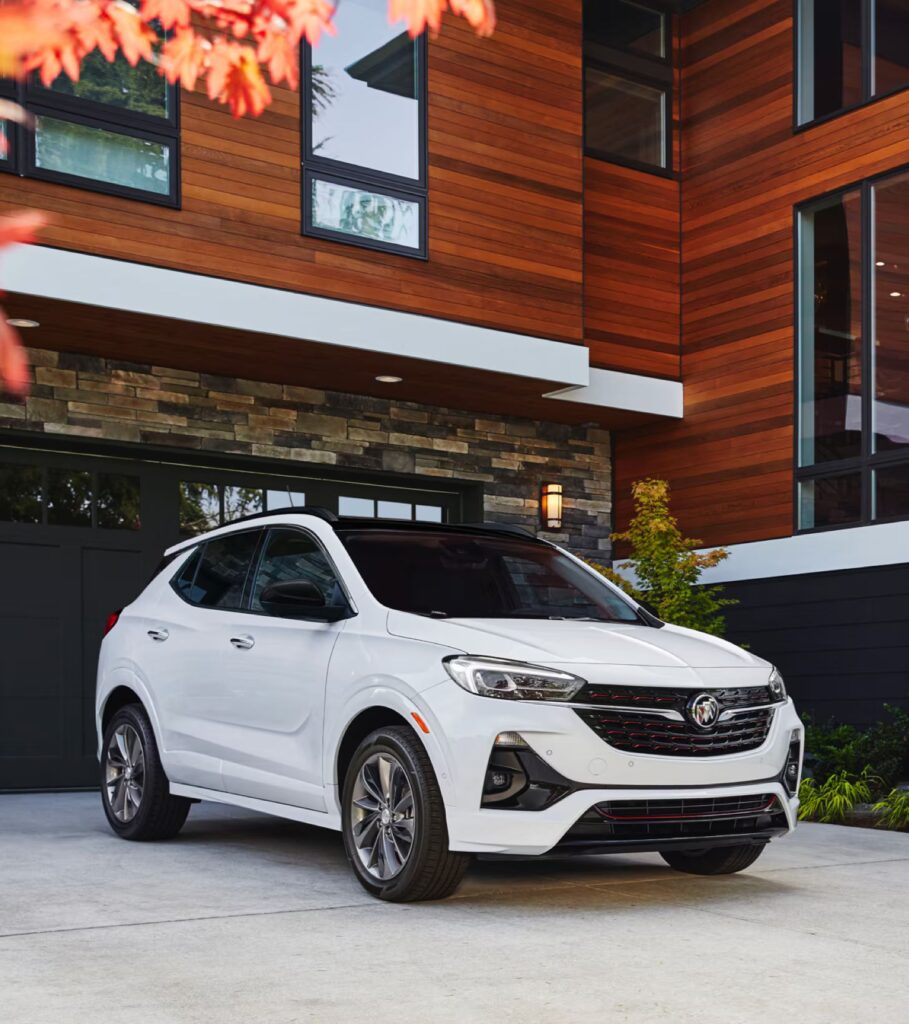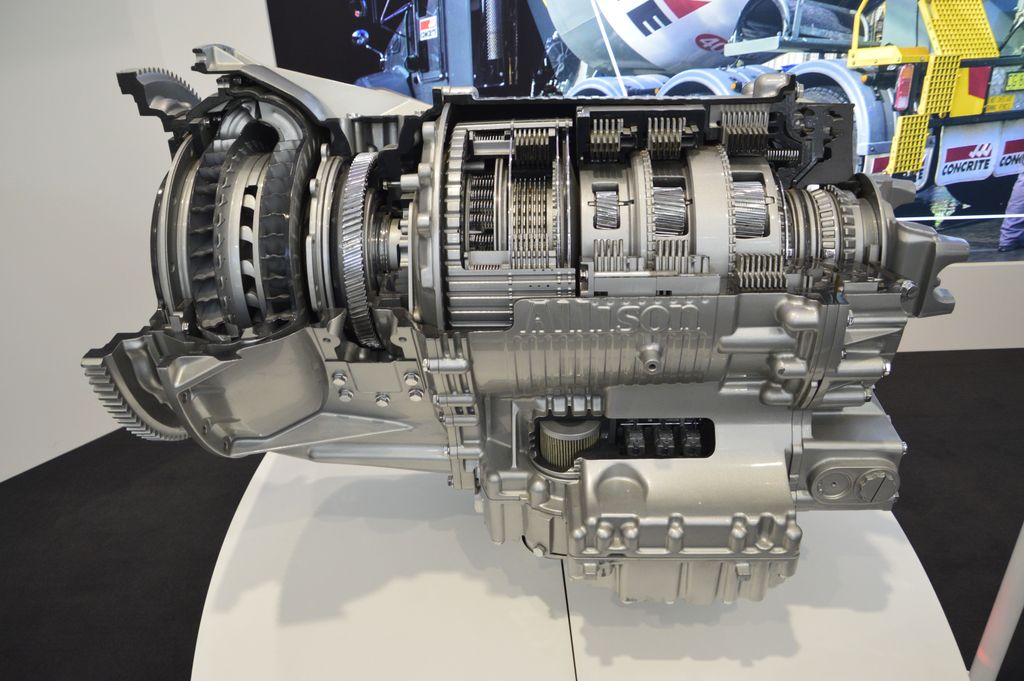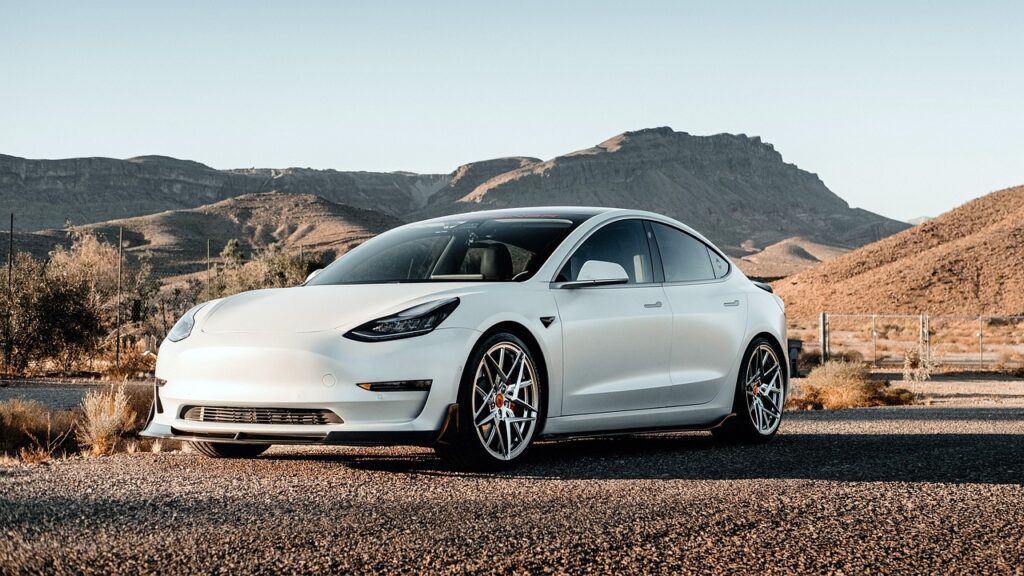
For anyone considering a new vehicle, understanding depreciation is arguably the most critical financial factor. It represents the single largest cost of ownership for most drivers, dictating how much money you’ll recoup at trade-in time or lose over a lease period. While some vehicles are renowned for holding their value tenaciously, bolstering future down payments, others prove to be significant financial burdens, shedding a substantial portion of their original price tag within just a few years.
In our pursuit of practical consumer advice, we often highlight vehicles that excel in value retention. However, this time, we turn our attention to the other end of the spectrum. A recent, comprehensive study conducted by the online vehicle marketplace iSeeCars.com offers invaluable insights into which models are hitting owners with the biggest average rates of depreciation over a five-year ownership period. This research examined transaction prices of an extensive 800,000 five-year-old used cars sold from March 2024 to February 2025, providing a robust, data-driven perspective on actual value loss.
The findings from this iSeeCars.com study paint a clear picture: the vehicles suffering the most significant value drops are predominantly luxury models and, increasingly, full-electric vehicles. As iSeeCars Executive Analyst Karl Brauer succinctly explains, “While a premium badge and the increased performance or luxury features that come with it are often sought out by new car buyers, the used car market doesn’t prioritize those traits to the same degree, thus the consistently higher depreciation for luxury models.” Electric vehicles, like many cutting-edge tech-driven commodities, also tend not to age gracefully, contributing to their accelerated depreciation. For lease holders and savvy buyers alike, understanding these trends is paramount.
Here, we delve into the top five vehicles from the iSeeCars study that have demonstrated the highest rates of depreciation over a five-year period, examining the unique characteristics and market dynamics that contribute to their substantial loss of value.
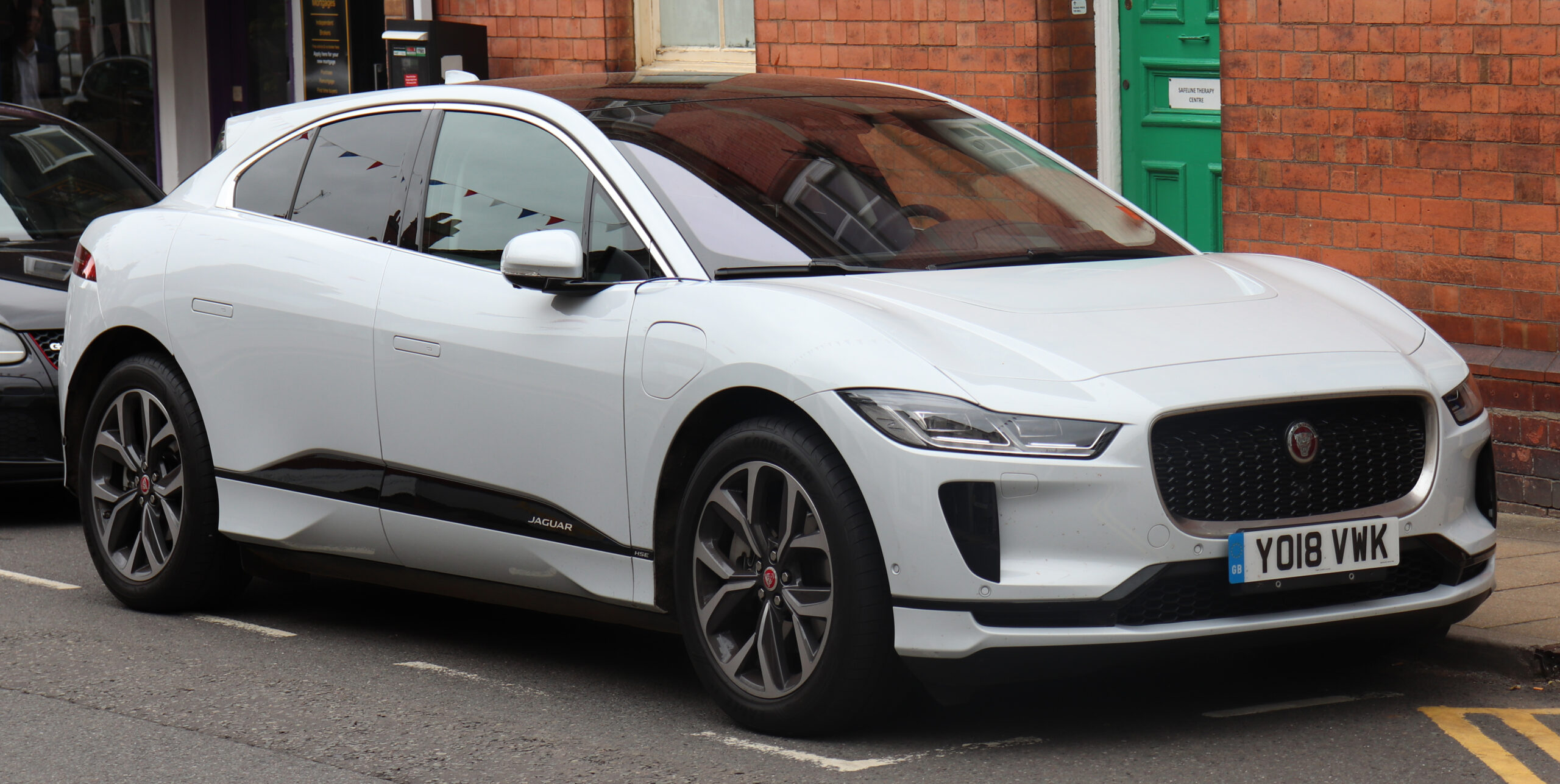
1. **Jaguar i-Pace EV**Leading the rogues’ gallery of depreciation is the kilowatt-powered Jaguar i-Pace luxury SUV, which has lost a staggering 72.2% of its original MSRP over a five-year ownership period. This represents an average financial loss of $51,953 to depreciation alone. The i-Pace’s position at the top of this list underscores a broader trend identified by iSeeCars: electric vehicles, as a segment, experience a stiff overall depreciation rate of 58.8% among five-year-old models, significantly higher than the industry average of 45.6% across all vehicle segments.
The rapid advancement of electric vehicle technology is a primary driver of this steep decline. As newer EV models with enhanced battery ranges, faster charging capabilities, and improved performance continuously enter the market, earlier iterations like the i-Pace quickly become less competitive and desirable in the used car sphere. This ‘tech obsolescence’ creates a challenging environment for value retention, as yesterday’s cutting-edge innovation can quickly become today’s outdated tech.
Furthermore, the i-Pace, being a luxury electric SUV, is doubly impacted by depreciation factors. It combines the inherent value erosion associated with premium badges and advanced features, which the used car market often de-prioritizes, with the accelerated depreciation typical of early-generation EVs. The substantial dollar value lost on the i-Pace – over $51,000 – serves as a stark reminder of the financial implications when these factors converge.
Car Model Information: 2022 Jaguar I-PACE HSE EV400 AWD Automatic
Name: Jaguar I-Pace
Manufacturer: Jaguar Land Rover
Production: 2018–2024
Assembly: Magna Steyr
Designer: Ian Callum
Class: Compact crossover SUV#Luxury vehicles
BodyStyle: SUV
Layout: all-wheel-drive
Platform: Jaguar Land Rover car platforms#D7e
Motor: Permanent magnet synchronous motor
Abbr: on
Transmission: 1-speed direct-drive reduction
Battery: kW·h,Lithium-ion battery
ElectricRange: United States Environmental Protection Agency
Charging: 11kW AC (7.4kW “1-phase/32A only” AC 2018–2020),100 kW DC
Wheelbase: 2990 mm
Length: 4682 mm
Width: ubl
Height: 1565 mm
Weight: 2133 kg
Sp: uk
Categories: 2020s cars, All-wheel-drive vehicles, All Wikipedia articles written in British English, All accuracy disputes, All articles lacking reliable references
Summary: The Jaguar I-Pace (stylised as I-PACE) is a battery-electric crossover SUV produced by Jaguar Land Rover (JLR) under their Jaguar marque. The I-Pace was announced in March 2018, European deliveries began in June 2018 and North American deliveries started in October 2018. Amid slowing sales and a change in corporate vision, Jaguar has announced that the I-Pace will be discontinued by 2025.
Get more information about: Jaguar I-Pace
Buying a high-performing used car >>>
Brand: Jaguar Model: i-Pace
Price: $35,199 Mileage: 32,938 mi.
Read more about: The 15 Cars Owners Regret Most: Why Their Value Dives Faster Than You Think
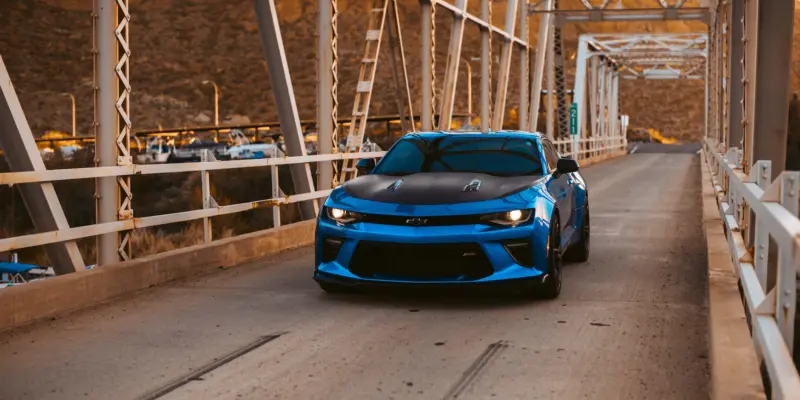
2. **BMW 7 Series sedan**Following closely is the BMW 7 Series sedan, which sheds an average of 67.1% of its original MSRP over five years, equating to a significant loss of $65,249. As a flagship luxury sedan, the 7 Series is designed to epitomize opulence, advanced technology, and driving performance. However, these very attributes contribute to its rapid depreciation, making it a less appealing proposition in the used car market.
One of the main reasons for the 7 Series’ steep depreciation is its high cost of ownership. Beyond the considerable initial purchase price, luxury vehicles like the 7 Series come with expensive maintenance, servicing, and potential repair costs. These ongoing expenses, coupled with the high cost of replacing or repairing advanced technological features, deter potential second-hand buyers who often seek more predictable and affordable ownership.
The relentless march of automotive technology also plays a significant role. The 7 Series is consistently at the forefront of innovation, introducing features such as gesture control, sophisticated driver assistance systems, and cutting-edge infotainment. While impressive when new, these advancements can quickly become outdated. Newer models arrive with even more refined tech, diminishing the desirability and, consequently, the value of older 7 Series models.
The BMW 7 Series also faces fierce competition within the luxury sedan segment. Rivals such as the Mercedes-Benz S-Class and Audi A8 offer comparable levels of luxury, performance, and technology. This crowded market gives potential buyers a wide array of choices, intensifying the pressure on resale values for all models, including the prestigious 7 Series.
Car Model Information: 2020 Volkswagen Tiguan 2.0T SE
Name: BMW 7 Series
Caption: BMW 7 Series (G11)
Manufacturer: BMW
Production: 1977–present
Class: Full-size car,luxury car
BodyStyle: sedan (car)
Predecessor: BMW New Six
Categories: All articles with dead external links, Articles with dead external links from July 2021, Articles with short description, BMW vehicle series, CS1 Chinese-language sources (zh)
Summary: The BMW 7 Series is a full-size luxury sedan manufactured and marketed by the German automaker BMW since 1977. It is the successor to the BMW E3 “New Six” sedan and is now in its seventh generation.
The 7 Series is BMW’s flagship car and is only available in a sedan bodystyle (including long wheelbase and limousine models). It traditionally introduces technologies and exterior design themes before other models in BMW’s lineup.
The first generation of the 7 Series was powered by straight-6 petrol engines, and following generations have been powered by inline-4, straight-6, V8 and V12 engines with both natural aspiration and turbocharging. Since 1995, diesel engines have been optional in the 7 Series.
Unlike the BMW 3 Series and BMW 5 Series sedans, BMW does not offer a full M model, but once offered an M performance variant, the BMW M760 with its 6.6L V12 (at the time the most powerful BMW ever made, not to be confused with BMW 760 6.6 V12 which does not offer the same performance). The Alpina B7 served as the high-performance variant of the 7 Series.
Get more information about: BMW 7 Series
Buying a high-performing used car >>>
Brand: BMW Model: 7 Series
Price: $21,000 Mileage: 37,875 mi.
Read more about: Automotive Icons Unraveled: The Definitive Account of 15 Star Brands and Models That Fell From Grace
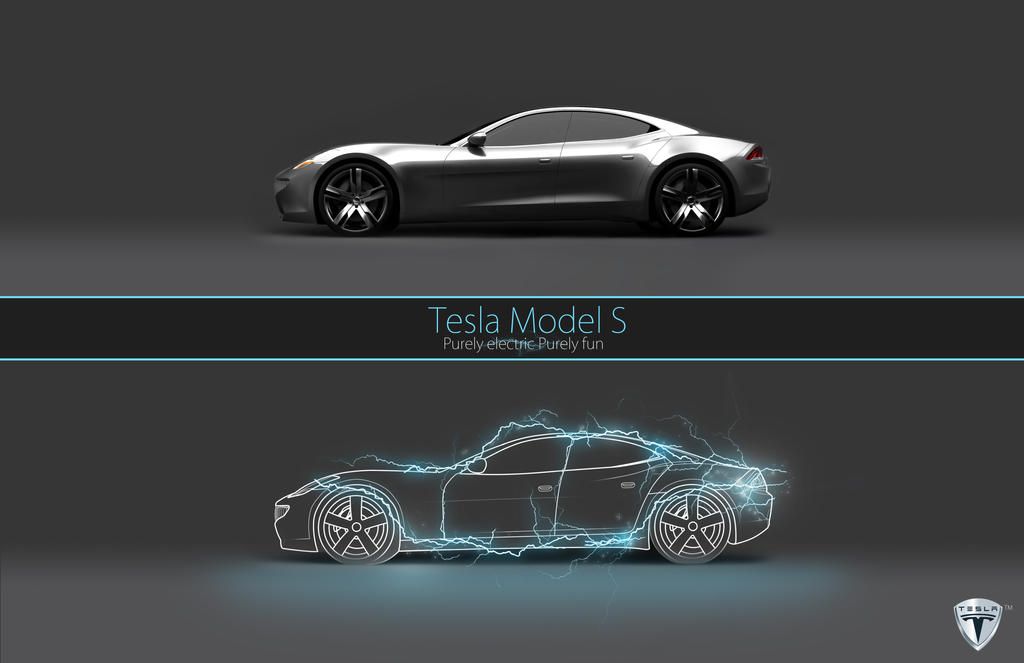
3. **Tesla Model S EV**Taking the third spot for highest depreciation, the Tesla Model S EV loses an average of 65.2% of its original MSRP over five years, representing a $52,165 drop in value. The inclusion of the Model S, along with other Tesla models, among the worst offenders in depreciation is likely unsurprising to those following automotive news. As iSeeCars Executive Analyst Karl Brauer notes, “Even Tesla’s Model 3, with the lowest rate of depreciation among electric vehicles, is over 10% higher than the industry average, and it only gets worse from there for EVs.”
Tesla’s vehicles, like other cutting-edge tech products, are susceptible to rapid value loss due to constant technological evolution. While a pioneer in the EV space, the Model S has seen numerous updates and improvements in battery technology, range, and autonomous driving features since its inception. These continuous advancements can make earlier versions seem less desirable, pushing down their resale value as consumers gravitate towards the latest iterations.
The specific factors influencing Tesla’s depreciation also include market dynamics and brand perception. The overall depreciation rate for five-year-old electric cars, at 58.8%, already significantly surpasses the industry average. Tesla, despite its market leadership, is not immune to these trends, and the sheer volume of new models and rapidly evolving features can affect the perceived long-term value of older models. Moreover, general market shifts and increased competition from other manufacturers entering the EV space contribute to the challenges in maintaining resale value for even once-dominant models like the Model S.
Car Model Information: 2020 Volkswagen Tiguan 2.0T SE
Name: Tesla Model S
ModelYears: 2013–present
Alt: A front-three quarter view of a gray Model S
Caption: #2016–2019: First major update
Designer: Franz von Holzhausen
Weight: cvt
Height: cvt
Width: cvt
Length: cvt
Wheelbase: cvt
ElectricRange: cvt
Battery: kWh,lithium-ion battery
Motor: Unbulleted list
Transmission: Reduction drive
Related: Tesla Model X
Layout: Rear-motor, rear-wheel drive,Dual-motor, all-wheel-drive,Tri-motor, all-wheel-drive layout
BodyStyle: liftback,sedan (automobile)
Class: Full-size car
Assembly: Unbulleted list
Production: June 2012 – present
Manufacturer: Tesla, Inc.
Sp: us
Chassis: Unibody
Categories: 2020s cars, All-wheel-drive vehicles, All Wikipedia articles written in American English, All articles containing potentially dated statements, Articles containing potentially dated statements from 2025
Summary: The Tesla Model S is a battery-electric, four-door full-size car produced by the American automaker Tesla since 2012. The automaker’s second vehicle and longest-produced model, the Model S has been described as one of the most influential electric cars in the industry. Car and Driver named it one of the best cars of the year in 2015 and 2016. Its various accolades include the Motor Trend Car of the Year Award in 2013.
Tesla started developing the Model S around 2007 under the codename WhiteStar. Initially, Henrik Fisker was appointed as the lead designer for the WhiteStar project; after a dispute with Elon Musk, Tesla’s CEO, Fisker was replaced by Franz von Holzhausen. By 2008, von Holzhausen had designed what would become the production Model S’s exterior. Tesla unveiled a prototype of the vehicle in March 2009 in Hawthorne, California. In 2010, Tesla acquired a facility in Fremont, California, to produce the Model S, which was previously owned by General Motors and Toyota. Series manufacture of the car officially began at the Tesla Fremont Factory in June 2012. Tesla carried out the final assembly for European markets at its facilities in Tilburg, Netherlands, between 2013 and 2021.
The Model S typically uses either one or initially two alternating current induction motors; since 2019, dual-motor versions have used a permanent magnet motor in the front, though the high-performance Model S Plaid’s three motors are permanent magnet units by default. Constructed mostly of aluminum, the Model S shares 30 percent of its components with the Model X—a crossover SUV that was introduced in 2015. The Model S has undergone several updates during its production, the most prominent ones occurring in 2016 and 2021. These updates have usually included modifications to the motor, such as changes to power or torque, revised exterior elements, and refreshed interior features. One such change included the 2015 introduction of Tesla Autopilot—a partial vehicle automation advanced driver-assistance system.
In 2015, the Model S was the world’s best-selling plug-in electric vehicle. In 2012, it was included on Time’s list of the Best Inventions of the Year, and the magazine later included it on its list of the 10 Best Gadgets of the 2010s in 2019. In 2014, The Daily Telegraph described the Model S as a “car that changed the world”. Road & Track argued that, with the introduction of the Plaid and features such as the yoke steering wheel, Tesla managed to turn the Model S into “perhaps one of the worst [cars in the world]”.
Get more information about: Tesla Model S
Buying a high-performing used car >>>
Brand: Tesla Model: Model S
Price: $21,000 Mileage: 37,875 mi.
Read more about: Protecting Your Purchase: A Consumer Report on Top Car Warranties and Key Manufacturer Recall Trends

4. **Infiniti QX80 SUV**With a 65.0% loss of its original MSRP over five years, amounting to $53,571 in depreciation, the Infiniti QX80 SUV stands as another significant value loser. This large luxury SUV exemplifies the broader trend where premium badges and their associated features, while attractive to new car buyers, do not command the same premium in the used vehicle market. Consumers shopping for pre-owned luxury SUVs often prioritize reliability and more accessible maintenance over the highest-tier features of a new model.
Large SUVs, especially those in the luxury segment, tend to incur substantial depreciation. The iSeeCars study specifically highlights that most of the large SUVs with the highest depreciation rates are luxury models. This is due to a combination of factors, including their high initial purchase price, which provides a larger base for depreciation to occur, and the elevated costs associated with their maintenance, fuel consumption, and insurance.
While the QX80 offers ample space, a commanding presence, and a luxurious cabin, these attributes are often balanced against the practical realities of ownership in the used market. Buyers may find similar utility in more mainstream or less expensive options, or they might be deterred by the prospect of higher running costs typical of large luxury vehicles. This leads to a diminished demand for used luxury large SUVs, contributing to their accelerated decline in value.
Car Model Information: 2020 INFINITI QX80 Luxe
Name: Infiniti QX80
Caption: 2019 Infiniti QX80 (US)
Manufacturer: Nissan
Aka: Infiniti QX56 (2004–2013)
Production: 2004–present
Class: Full-size,luxury SUV
BodyStyle: SUV
Layout: Front-engine, rear-wheel-drive,Front-engine, four-wheel-drive
Predecessor: Nissan Pathfinder#Infiniti QX4
Chassis: Body-on-frame
Categories: 2010s cars, 2020s cars, All-wheel-drive vehicles, All articles with failed verification, All articles with unsourced statements
Summary: The Infiniti QX80 (formerly called the Infiniti QX56 until 2013) is a full-size luxury SUV marketed by Nissan’s luxury division Infiniti since the 2004 model year. The first-generation QX56 was built in the United States and is based on the first-generation Armada. The second-generation model was released in 2010 as a model produced in Japan, which used the sixth-generation Patrol (later also marketed as the second-generation Armada since 2016) as the base vehicle instead. Since the 2014 model year in 2013, the vehicle was renamed to the QX80 as Infiniti renamed their entire product line under a new nomenclature.
Get more information about: Infiniti QX80
Buying a high-performing used car >>>
Brand: Infiniti Model: QX80
Price: $23,656 Mileage: 104,531 mi.
Read more about: Financial Freefall: The 15 Cars That Will Absolutely Decimate Your Wallet with Depreciation
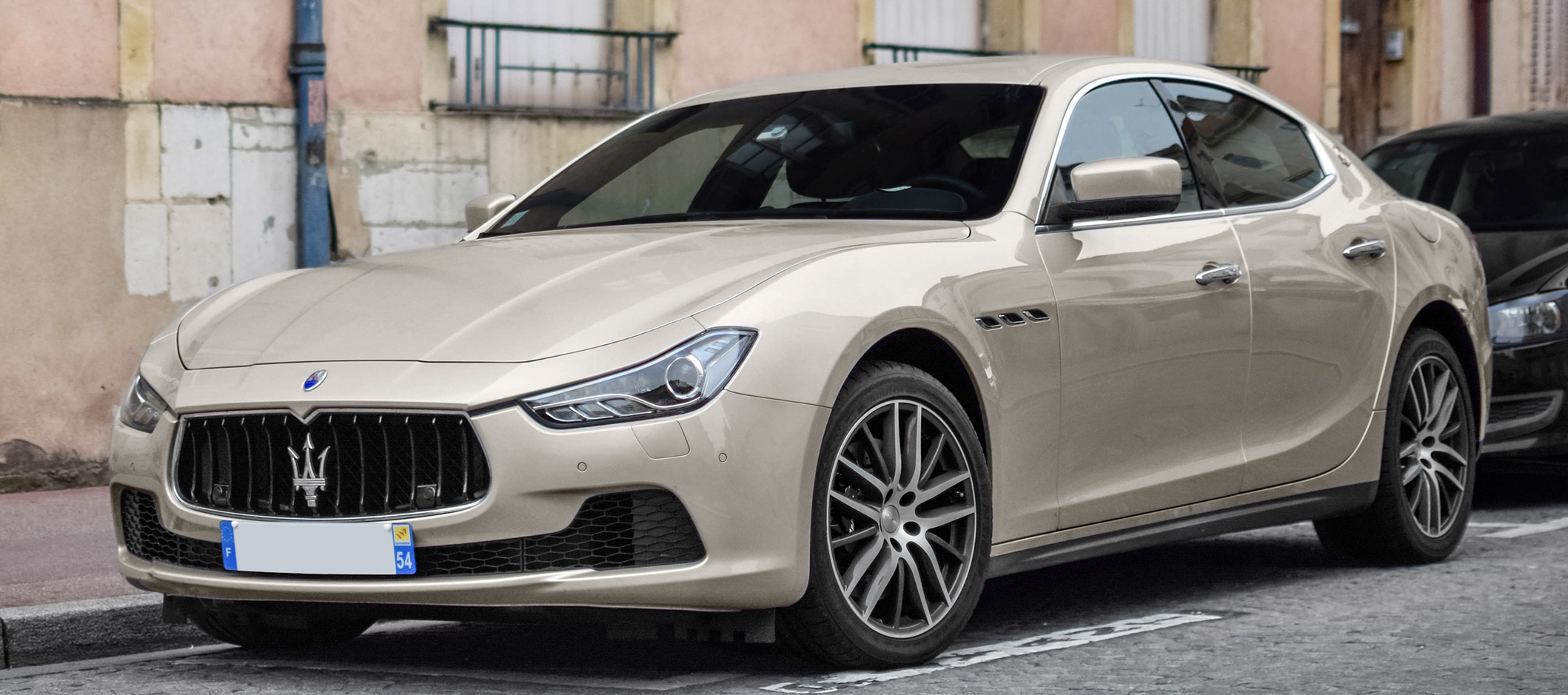
5. **Maserati Ghibli sedan**Rounding out our top five is the Maserati Ghibli sedan, which experiences a 64.7% depreciation rate over five years. Notably, the Ghibli incurs the highest dollar value loss among these top five, at a staggering $70,874. This illustrates a critical point: both the percentage and the actual dollar value drop need careful consideration for new car buyers, especially in the luxury segment. A premium badge can come with a very steep price in terms of lost value.
The Ghibli’s high cost of ownership is a significant factor in its rapid depreciation. As a luxury and exotic car, its initial purchase price is substantial, but so too are the expenses for maintenance, specialized repairs, and parts. Maserati’s reputation for these elevated ownership costs can make potential buyers in the used car market hesitant, impacting demand and consequently, resale value. The need for specialized service, often limited to specific dealerships, adds another layer of complexity and expense.
Another challenge for the Maserati Ghibli is its relatively limited brand recognition when compared to established luxury powerhouses like BMW, Mercedes-Benz, and Audi. While Maserati boasts a rich heritage and distinct Italian craftsmanship, it doesn’t always carry the same widespread perception of reliability or market saturation as its German counterparts. This can make potential used car buyers less confident, leading to reduced demand and a quicker drop in value.
Furthermore, the Ghibli operates in a highly competitive segment, vying for attention against well-entrenched luxury sedans such as the BMW 5 Series, Mercedes-Benz E-Class, and Audi A6. With numerous options offering similar levels of luxury, performance, and technology, the Ghibli struggles to maintain a unique selling proposition in the used market. This intense competition provides buyers with abundant alternatives, further contributing to the Ghibli’s substantial depreciation.
Continuing our examination of vehicles that present significant depreciation challenges, we delve into five additional models that underscore the trends of rapid value loss in specific segments, offering crucial insights for consumers navigating the complexities of the automotive market.
Car Model Information: 2015 Maserati Ghibli S Q4
Name: Maserati Ghibli
Caption: 2018 Maserati Ghibli GranLusso
Manufacturer: Maserati
Assembly: Modena,Grugliasco,Turin
Class: Grand tourer,Executive car
BodyStyle: fastback,coupé,Roadster (automobile),Sedan (automobile)
Production: AM115: 1967–1973,AM336: 1992–1998,M157: 2013–2023
Categories: 1970s cars, 1990s cars, 2010s cars, Articles with short description, CS1 Italian-language sources (it)
Summary: Maserati Ghibli is the name of three different cars produced by Italian automobile manufacturer Maserati: the AM115, a V8 grand tourer from 1967 to 1973; the AM336, a V6 twin-turbocharged coupé from 1992 to 1998; and the M157, an executive saloon from 2013 to 2023.
Ghibli is the Libyan Arabic name for the hot dry south-westerly wind of the Libyan desert.
Get more information about: Maserati Ghibli
Buying a high-performing used car >>>
Brand: Maserati Model: Ghibli
Price: $16,498 Mileage: 74,452 mi.
Read more about: The Silent Drain: 11 Luxury Sedans Whose Resale Value Vanished Overnight
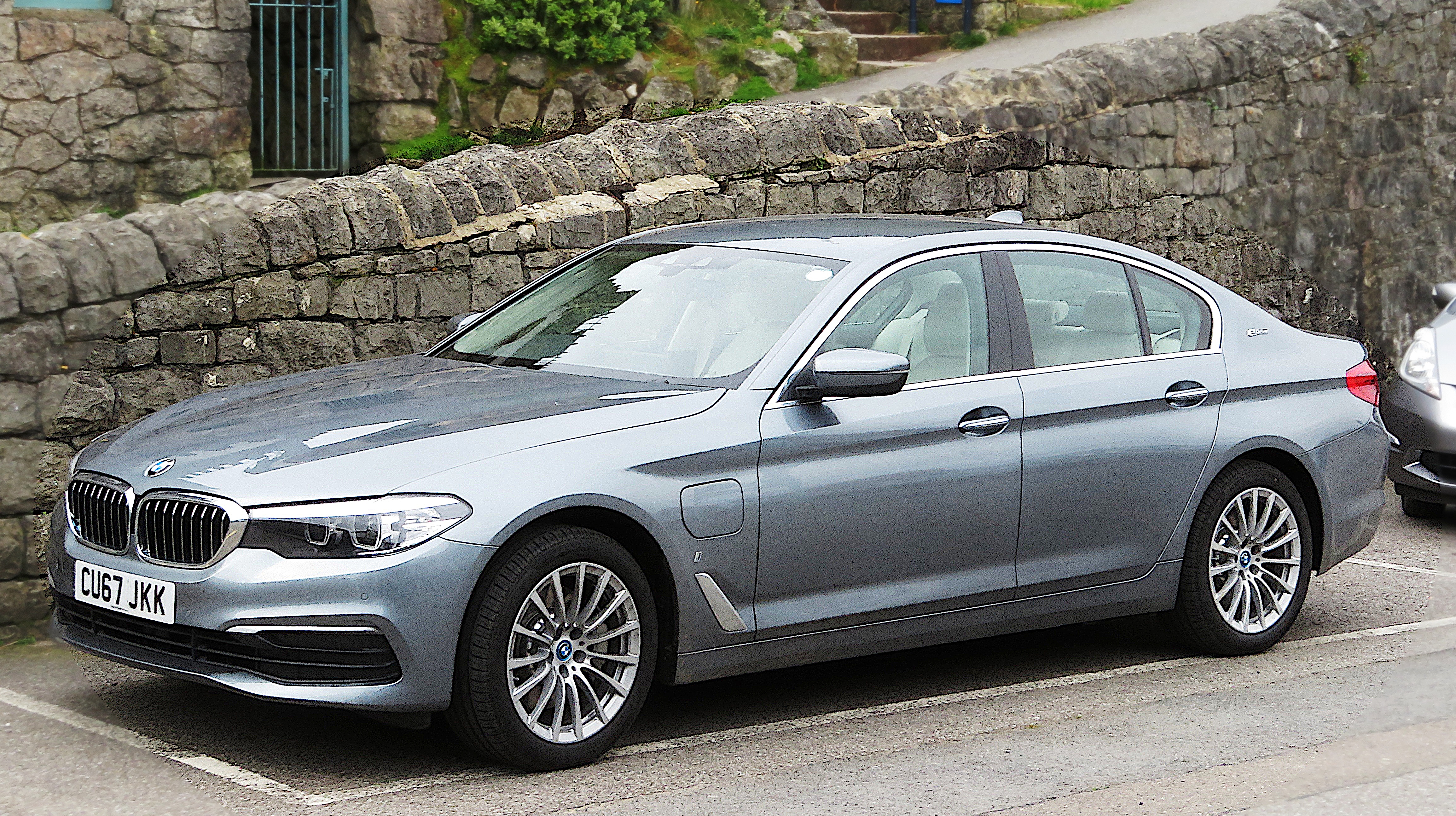
6. **BMW 5 Series Hybrid**The BMW 5 Series Hybrid, a vehicle attempting to marry luxury with electrified efficiency, finds itself positioned among the top depreciators, shedding 64.7% of its original MSRP over five years. This translates to an average financial loss of $47,457. Its inclusion highlights a nuance within the electric vehicle landscape: while hybrids generally show better value retention than full EVs, certain luxury hybrid models, especially those from premium brands, still face considerable depreciation.
As a luxury offering, the 5 Series Hybrid inherits many of the depreciation challenges common to its premium siblings, such as the 7 Series. High initial purchase prices set a larger base for value erosion, and the advanced technology, while appealing when new, can be costly to maintain and repair in the long term. The added complexity of a hybrid powertrain, with its specialized components, can further deter used car buyers who are conscious of potential out-of-warranty costs.
Moreover, the rapid evolution of hybrid and electric vehicle technology means that even relatively new hybrid models can quickly be overshadowed by newer, more efficient, or more powerful iterations. This continuous advancement affects consumer perception and demand, pushing down resale values. For prospective buyers, the BMW 5 Series Hybrid exemplifies how the intersection of luxury and emerging technology can lead to a steeper financial decline than might be anticipated for a supposedly ‘eco-friendly’ option.
Car Model Information: 2020 Volkswagen Tiguan 2.0T SE
Name: BMW 5 Series
Manufacturer: BMW
Production: 1972–present
Class: Executive car
BodyStyle: Sedan (automobile)
Layout: Front-engine, rear-wheel-drive,Front-engine, all-wheel-drive
Predecessor: BMW New Class
Categories: 1980s cars, 1990s cars, 2000s cars, 2010s cars, 2020s cars
Summary: The BMW 5 Series is an executive car manufactured and marketed by BMW since 1972. It is the successor to the BMW New Class sedans and is currently in its eighth generation. The car is sold as either a sedan or, since 1991, a station wagon (marketed as “Touring”). A 5-door fastback (marketed as “Gran Turismo”) was sold between 2009 and 2017. Each successive generation has been given an internal G-code designation since 2017. Previously, a F-code designation was used between 2010 and 2016, while an E-code designation was used between 1972 and 2010. These are used to distinguish each model and generation from each other.
The first generation of the 5 Series was powered by naturally aspirated four-cylinder and six-cylinder petrol engines. Following generations have been powered by four-cylinder, six-cylinder, V8 and V10 engines that are either naturally aspirated or turbocharged. Since 1982, diesel engines have been included in the 5 Series range.
The 5 Series is BMW’s second-best-selling model after the 3 Series. On 29 January 2008, the 5 millionth 5 Series was manufactured, a 530d sedan in Carbon Black Metallic. It is BMW’s oldest nameplate still in production and the first model line to use “Series” in the name, debuting the three-digit model naming convention still used today. Since the E28, all generations of 5 Series have included an “M” model, called the BMW M5.
Get more information about: BMW 5 Series
Buying a high-performing used car >>>
Brand: BMW Model: 5 Series
Price: $21,000 Mileage: 37,875 mi.
Read more about: Automotive Icons Unraveled: The Definitive Account of 15 Star Brands and Models That Fell From Grace

7. **Nissan Leaf EV**The Nissan Leaf EV, an early trailblazer in the electric vehicle market, registers a substantial 64.1% loss of its original MSRP over a five-year period, amounting to an average depreciation of $18,043. Despite its pioneering role in making electric vehicles accessible, the Leaf’s resale value has been significantly impacted by the relentless pace of technological advancements in the EV sector.
A primary factor in the Leaf’s rapid depreciation is the swift evolution of EV battery technology. As newer models, both from Nissan and competitors, offer extended ranges, faster charging capabilities, and improved battery chemistry, older Leaf models with more limited ranges become less competitive and less desirable in the used market. This ‘tech obsolescence’ is particularly acute for earlier Leaf models, whose battery degradation over time further exacerbates concerns about range and performance for potential second-hand buyers.
Another challenge for the Nissan Leaf is the increasing competition within the electric vehicle segment. When it first launched, the Leaf had few direct rivals. However, today’s market is flooded with a diverse array of EVs that often boast superior range, more advanced features, and more appealing designs. This crowded marketplace intensifies pressure on the Leaf’s resale value, as consumers have many more options that might offer better long-term value and updated technology.
Despite these hurdles, the Nissan Leaf remains an important vehicle in the history of electric transportation. It played a crucial role in mainstreaming EVs and proving their viability. For consumers considering a used Leaf, it represents a potentially affordable entry into EV ownership, though with the understanding of its inherent depreciation challenges. Nissan has continually updated the Leaf, but the legacy of earlier models continues to influence overall market perception and value retention.
Car Model Information: 2020 Volkswagen Tiguan 2.0T SE
Name: Nissan Leaf,(first generation)
ModelCode: undefined
Aka: Venucia e30 (China)
Production: October 2010 nbndash September 2017
ModelYears: 2011nbndash2017
Class: Compact car
BodyStyle: hatchback
Manufacturer: Nissan
Assembly: unbulleted list
Designer: Kazuki Yamazaki and Masahide Fujiwara
Platform: Nissan B platform#Nissan EV platform
Motor: Nissan EM motor
Battery: lithium-ion battery
Range: unbulleted list
Transmission: unbulleted list
Charging: unbulleted list
Wheelbase: 2700 mm
Abbr: on
Length: 4445 mm
Width: 1770 mm
Height: 1550 mm
Weight: convert
Layout: Front-motor, front-wheel-drive
Predecessor: Nissan Altra
Successor: Nissan Leaf (second generation)
Categories: 2010s cars, All Wikipedia articles written in British English, All articles containing potentially dated statements, All articles with dead external links, Articles containing potentially dated statements from December 2011
Summary: The Nissan Leaf (first generation) is a compact car that was manufactured by Japanese automaker Nissan Motor Company from 2010 to 2017. A battery electric vehicle, its name, stylised as LEAF, serves as a backronym to “leading environmentally-friendly affordable family car.” It is the world’s first series-produced battery electric automobile and has been offered exclusively as a five-door hatchback.
The Leaf—Nissan’s second battery-electric automobile—debuted on 2 August 2009. It is the first generation of the model and was succeeded by the second generation in 2017. Before official production commencement, Nissan developed three prototype battery electric vehicles—dubbed the EV-01, EV-02 and EV-11. The Leaf followed the unsuccessful Altra and began production in Japan on 22 October 2010. The Smyrna plant commenced manufacture of the Leaf on 13 December 2012, and the Sunderland plant followed on 27 March 2013. It was launched in Japan and the United States in December 2010, with subsequent introductions in several European countries and Canada in 2011.
Initially, the Leaf was available exclusively with a large battery pack composed of 192 flat, laminated lithium-ion cells developed in collaboration with NEC, which offers advantages such as simplified design, efficient cooling, and optimal packaging. The battery pack is located under the floor and between the wheels, optimising the vehicle’s handling and interior space. The 80 kW (110 hp) AC electric motor can be powered for up to 100 miles (160 km) when the battery is fully charged. Recharging can take 16 hours on 120 V or 8 hours on 230 V power. Fast charging is also available with a specific charger, which can restore 80% of the battery capacity in approximately 30 minutes.
The Leaf has garnered both acclaim and criticism from multiple automotive critics. Car and Driver, an American automotive magazine, expressed unfavourable opinions about the inexpensive materials used in the vehicle, asserting that they seem more fitting for a car priced at half its actual cost. However, they commended the Leaf for its spacious boot/trunk, along with features like standard heated seats and, in higher-end models, a heated steering wheel and leather seats. Opinions on the battery performance and safety aspects vary, with some finding the battery and range underwhelming and others expressing concerns about safety levels.
Get more information about: Nissan Leaf (first generation)
Buying a high-performing used car >>>
Brand: Nissan Model: Leaf EV
Price: $21,000 Mileage: 37,875 mi.
Read more about: The 15 Cars Owners Regret Most: Why Their Value Dives Faster Than You Think
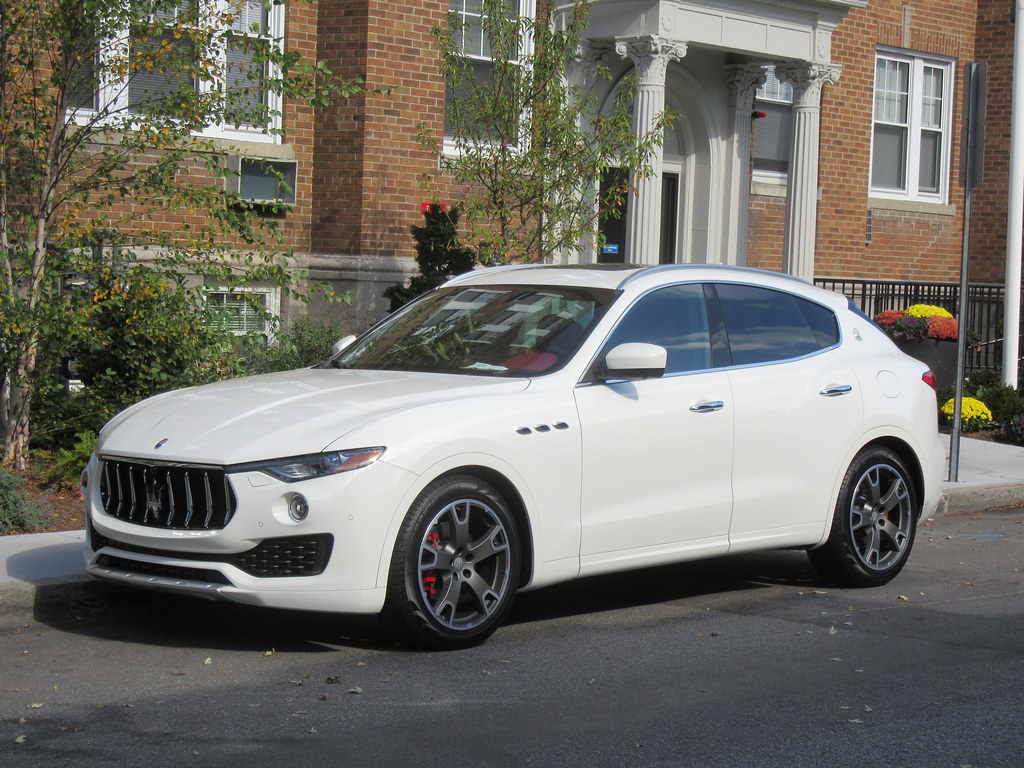
8. **Maserati Levante SUV**The Maserati Levante SUV, a luxury vehicle aiming to combine Italian flair with SUV practicality, demonstrates a significant depreciation rate of 63.7% over five years, resulting in an average dollar loss of $64,991. Much like its sedan counterpart, the Ghibli, the Levante is a prime example of how exotic and premium brands can struggle with value retention in the mainstream used car market.
The high cost of ownership is a critical contributor to the Levante’s rapid depreciation. As a high-performance luxury SUV, its initial purchase price is substantial. Beyond this, Maserati vehicles are renowned for their elevated maintenance costs, requiring specialized parts and service, which can be limited to specific dealerships. These ongoing expenses act as a significant deterrent for used car buyers, who often prioritize reliability and more predictable, affordable upkeep.
Furthermore, Maserati’s brand recognition, while associated with luxury and heritage, does not carry the same widespread perception of robust reliability or market ubiquity as German luxury marques like BMW, Mercedes-Benz, or Audi. This comparatively limited brand appeal in the broader used car market can lead to reduced demand. Potential buyers may hesitate, preferring brands with a more established reputation for long-term dependability and readily available parts and service.
The Levante also operates in a highly competitive luxury SUV segment, facing rivals that often offer similar levels of performance, luxury, and technology, sometimes with a stronger resale value track record. This intense competition means that buyers have numerous alternatives, further pressuring the Levante’s value. Its steep depreciation, particularly in terms of dollar value, underscores the financial implications for new buyers of such exclusive, high-cost vehicles.
Car Model Information: 2017 Maserati Levante S
Name: Maserati Levante
Caption: 2016 Maserati Levante S (Europe, pre-facelift)
Manufacturer: Maserati
Production: May 2016–2024
ModelYears: 2017–2024
Assembly: Turin
Designer: Centro Stile Maserati
Class: Mid-size crossover SUV#Luxury vehicles
BodyStyle: Sport utility vehicle
Layout: F4 layout
Platform: Maserati M156 platform
Related: Maserati Ghibli (M157),Maserati Quattroporte VI
Engine: unbulleted list
Motor: eBooster 48V (eTorque)
Transmission: ZF Friedrichshafen,ZF 8HP transmission,Automatic transmission
Drivetrain: Mild hybrid
Wheelbase: 3004 mm
Abbr: on
Length: 5003 mm
Width: 1968 mm
Height: 1679 mm
Weight: convert
Sp: uk
Categories: All-wheel-drive vehicles, Articles with short description, Cars introduced in 2016, Luxury crossover sport utility vehicles, Luxury sport utility vehicles
Summary: The Maserati Levante (Tipo M161) is an executive crossover SUV produced by Italian manufacturer Maserati at the Mirafiori factory in Turin from 2016. The Levante went on sale in Europe in May 2016, and in North America in September 2016. Production of the Levante ended in 2024, commemorated with the release of a top-spec 424BHP special edition.
The Levante was named after a warm, easterly wind that blows in the western Mediterranean Sea, southern France, down to the Strait of Gibraltar. The name of the wind, in turn, comes from the Latin word “levare”, which means “to rise”. Its design is based on the Kubang concept car that debuted at the 2011 Frankfurt Auto Show.
Get more information about: Maserati Levante
Buying a high-performing used car >>>
Brand: Maserati Model: Levante
Price: $19,988 Mileage: 54,539 mi.
Read more about: Financial Freefall: The 15 Cars That Will Absolutely Decimate Your Wallet with Depreciation
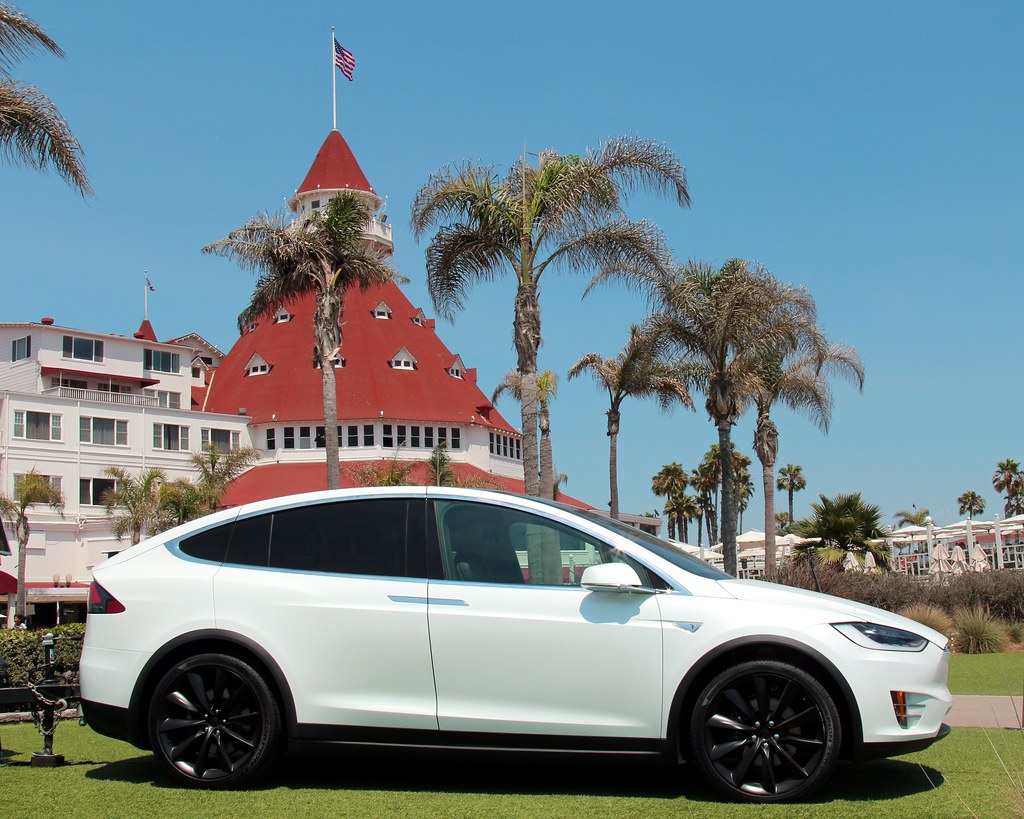
9. **Tesla Model X EV**The Tesla Model X EV, known for its distinctive falcon-wing doors and advanced technology, has experienced a significant depreciation of 63.4% of its original MSRP over five years, translating to an average loss of $53,846. The Model X’s inclusion among the vehicles with the highest depreciation rates reinforces the trend observed with other early-generation electric vehicles and Tesla models in particular.
One of the primary drivers of the Model X’s value loss is the rapid and continuous evolution of Tesla’s own technology. Since its introduction, the Model X has seen numerous over-the-air software updates and hardware revisions, constantly improving battery range, charging speeds, and autonomous driving capabilities. While beneficial for new buyers, this rapid innovation means that older models quickly become less current, diminishing their desirability and perceived value in the used car market.
The broader market dynamics for electric vehicles also play a significant role. As iSeeCars Executive Analyst Karl Brauer notes, the overall depreciation rate for five-year-old electric cars is a stiff 58.8%, substantially higher than the industry average. Tesla, despite its market leadership and innovation, is not immune to these segment-wide trends. The increasing competition from other manufacturers entering the luxury EV SUV space further intensifies the pressure on the Model X’s resale value.
For consumers, the Model X represents a compelling package of performance, space, and unique features. However, prospective buyers, especially those in the used market, must weigh these attributes against the rapid technological obsolescence and the segment’s inherent depreciation challenges. The substantial dollar value lost on the Model X highlights the financial consideration of investing in rapidly evolving technologies.
Car Model Information: 2020 Volkswagen Tiguan 2.0T SE
Name: Tesla Model X
Manufacturer: Tesla, Inc.
Production: 2015–present
Assembly: unbulleted list
Designer: Franz von Holzhausen
Class: Crossover (automobile)
BodyStyle: 5-door SUV
Layout: unbulleted list
Doors: unbulleted list
Related: Tesla Model S
Motor: unbulleted list
Title: Discontinued
Transmission: unbulleted list
Battery: unbulleted list
ElectricRange: FTP-75
Wheelbase: cvt
Length: cvt
Width: cvt
Height: cvt
Weight: unbulleted list
Sp: us
Categories: 2020s cars, All Wikipedia articles in need of updating, All Wikipedia articles written in American English, All articles containing potentially dated statements, All articles lacking reliable references
Summary: The Tesla Model X is a battery electric mid-size luxury crossover SUV built by Tesla, Inc. since 2015. Developed from the full-sized sedan platform of the Tesla Model S, the vehicle uses distinctive falcon wing doors for rear passenger access.
The Model X has an EPA size class as an SUV, and shares around 30 percent of its content with the Model S, half of the originally planned 60 percent, and weighs about 10 percent more. Both the Model X and Model S are produced at the Tesla Factory in Fremont, California. The prototype was unveiled at Tesla’s design studios in Hawthorne, California, on February 9, 2012. First deliveries of the Model X began in September 2015. After one full year on the market, in 2016, the Model X ranked seventh among the world’s best-selling plug-in cars. A refresh of the Tesla Model X was introduced in 2021, offering a new “Plaid” performance model, along with a revised interior, powertrain, and suspension.Another update of the Model X was introduced in June 2025 with a new front bumper camera, new wheel designs, increased third-row space, dynamic ambient lighting, and adaptive headlights. The updates are similar to the Model S, which was updated at the same time.
As of July 2025, the Model X is available as a Long-Range version with an estimated EPA range of 352 miles (566 km) and a high performance “Plaid” version with an estimated EPA range of 335 miles (539 km).
Get more information about: Tesla Model X
Buying a high-performing used car >>>
Brand: Tesla Model: Model X
Price: $21,000 Mileage: 37,875 mi.
Read more about: Protecting Your Purchase: A Consumer Report on Top Car Warranties and Key Manufacturer Recall Trends
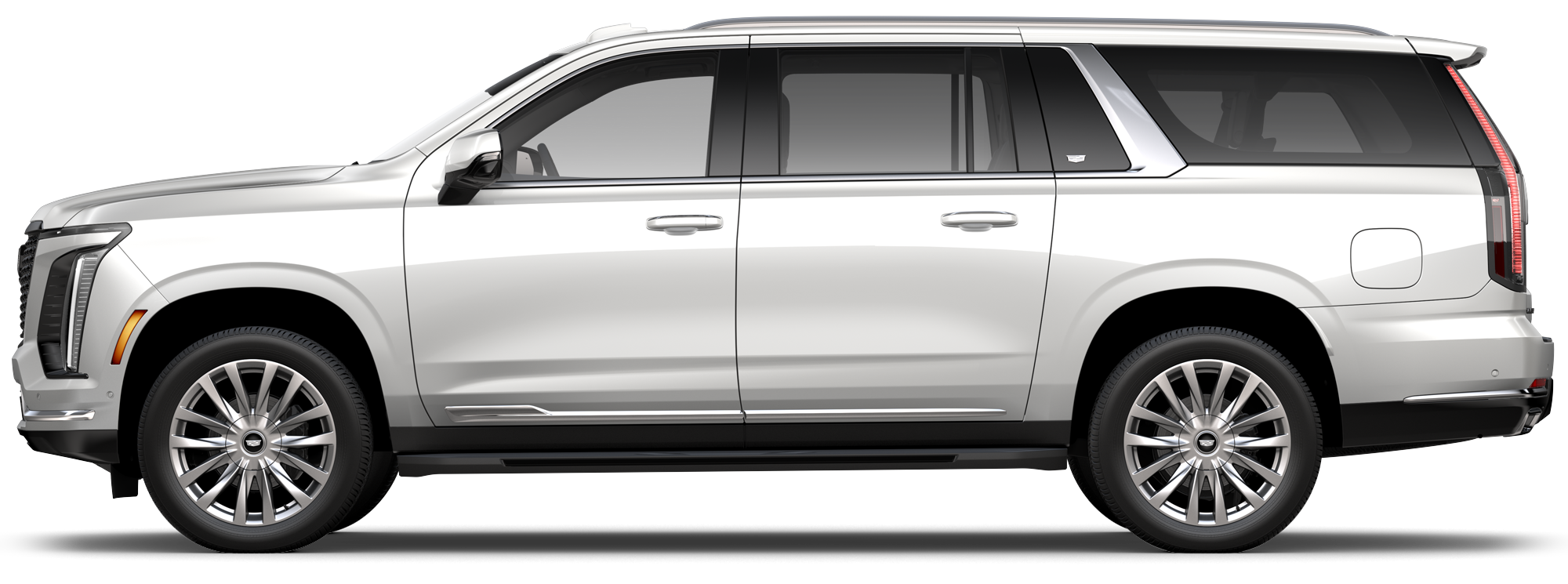
10. **Cadillac Escalade ESV SUV**Rounding out our list of the top depreciating vehicles is the Cadillac Escalade ESV SUV, which loses an average of 62.9% of its original MSRP over five years, representing a significant financial hit of $56,996. This extended-wheelbase version of the iconic luxury SUV perfectly illustrates the challenges faced by large, high-end vehicles in retaining their value in the long term.
As a large luxury SUV, the Escalade ESV combines a substantial initial purchase price with elevated running costs, including fuel consumption, insurance, and maintenance. While its commanding presence, vast interior space, and opulent features appeal to new buyers, these same attributes can deter used car shoppers who are often more sensitive to ongoing ownership expenses. The sheer scale of the vehicle and its luxurious amenities mean that potential repairs or part replacements can be considerably more expensive.
Furthermore, the luxury large SUV segment is subject to intense competition and frequent updates. Newer models consistently arrive with refreshed designs, more advanced technology, and improved efficiency. This rapid churn can quickly make older Escalade ESV models feel dated, reducing their appeal and demand in the secondary market. Buyers seeking a used large SUV might opt for alternatives that offer a more favorable balance of cost, reliability, and depreciation.
The Cadillac Escalade ESV’s depreciation figures underscore a crucial point for consumers: while the allure of a large, fully-loaded luxury SUV is strong, the financial reality of its value retention is often stark. For those considering such a vehicle, understanding that a significant portion of its value will be lost over a five-year period is essential for making an informed purchase decision. Conversely, for used car buyers, it presents an opportunity to acquire a high-end vehicle at a much-reduced price, provided they are prepared for the associated ownership costs.
Car Model Information: 2020 Volkswagen Tiguan 2.0T SE
Name: Cadillac Escalade
Caption: Fifth generation Cadillac Escalade
Manufacturer: Cadillac
Production: 1998–present,2002–present (ESV),2001–2013 (EXT),2008–2013 (Hybrid)
ModelYears: 1999–2000,2002–present
Class: Full-size,luxury car,sport utility vehicle
Related: ubl
Layout: Front-engine, rear-wheel drive layout,Front-engine, four-wheel drive layout
Categories: 2000s cars, 2010s cars, 2020s cars, All-wheel-drive vehicles, All Wikipedia articles in need of updating
Summary: The Cadillac Escalade is a full-size luxury SUV manufactured by General Motors and marketed by Cadillac as its first major entry into the SUV market. The Escalade was introduced for the 1999 model year in response to an influx of new luxury SUVs in the late 1990s including the Mercedes-Benz M-Class, Range Rover, Lexus LX, and Ford’s 1998 debut of the Lincoln Navigator. The Escalade project went into production only ten months after it was approved. The Escalade is built in Arlington, Texas.
The term “escalade” refers to a siege warfare tactic of scaling defensive walls or ramparts with the aid of ladders or siege towers. More generally, it is a French word which is the noun-equivalent form of the French verb escalader, which means “to climb or scale”.
The Escalade is currently sold in North America and select international markets (Europe and Asia) where Cadillac has official sales channels. The Escalade ESV (Escalade Stretch Vehicle) is sold in North America, Russia, and the Middle East, but is only available by special order in some international markets. The right-hand-drive Escalade and Escalade ESV are available through third-party conversion specialists without official agreement with Cadillac in Australian, Oceanic, and Japanese markets.
On August 8, 2023, GM presented the Escalade IQ, an all-electric version of the Escalade, and the third model in Cadillac’s EV line, after the Celestiq, and Lyriq. It is expected to go on sale in late 2024 for the 2025 model year, with a starting price of $130,000.
The Escalade has gone through five generations, the most recent (the fifth) prsented in 2021, noted for its technology and self-driving capability. The fifth generation Escalade is nearly two metres high, and was criticized by The Verge for its excessive size and hazard to pedestrians.
Get more information about: Cadillac Escalade
Buying a high-performing used car >>>
Brand: Cadillac Model: Escalade ESV
Price: $21,000 Mileage: 37,875 mi.
Read more about: Financial Freefall: The 15 Cars That Will Absolutely Decimate Your Wallet with Depreciation
Our deep dive into the vehicles with the worst resale values reveals a compelling narrative about the interplay of luxury, technology, and market dynamics. Whether it’s the swift obsolescence impacting electric vehicles or the high cost of ownership diminishing the appeal of premium models, these cars serve as powerful reminders that a vehicle’s initial purchase price is merely the beginning of its financial story. For savvy consumers, this data isn’t just a warning but also a guide, illuminating both the pitfalls to avoid and the potential bargains awaiting those who understand the true cost of depreciation. Making informed choices, armed with insights into value retention, is the ultimate key to navigating today’s complex automotive landscape and securing a truly smart investment on wheels.


